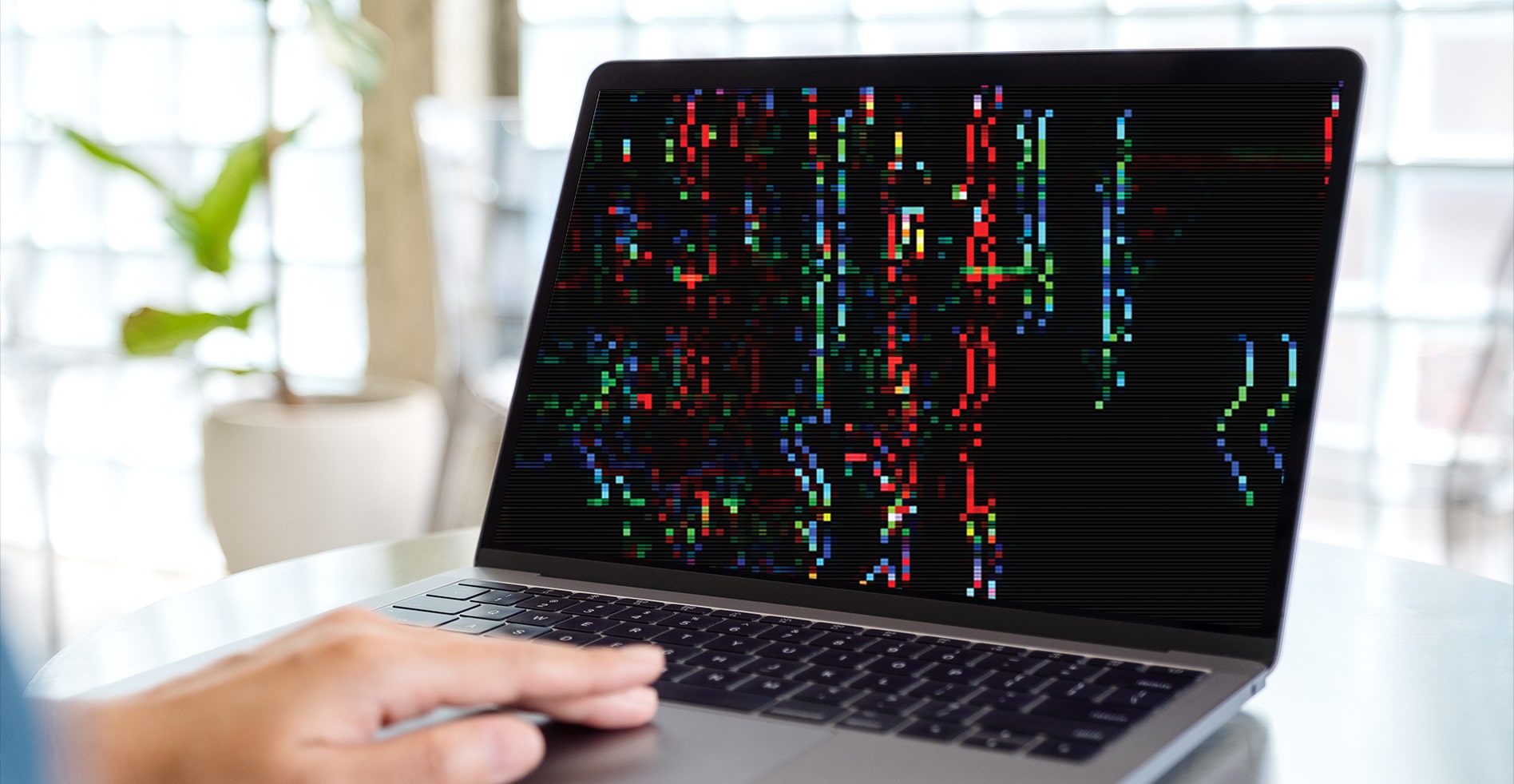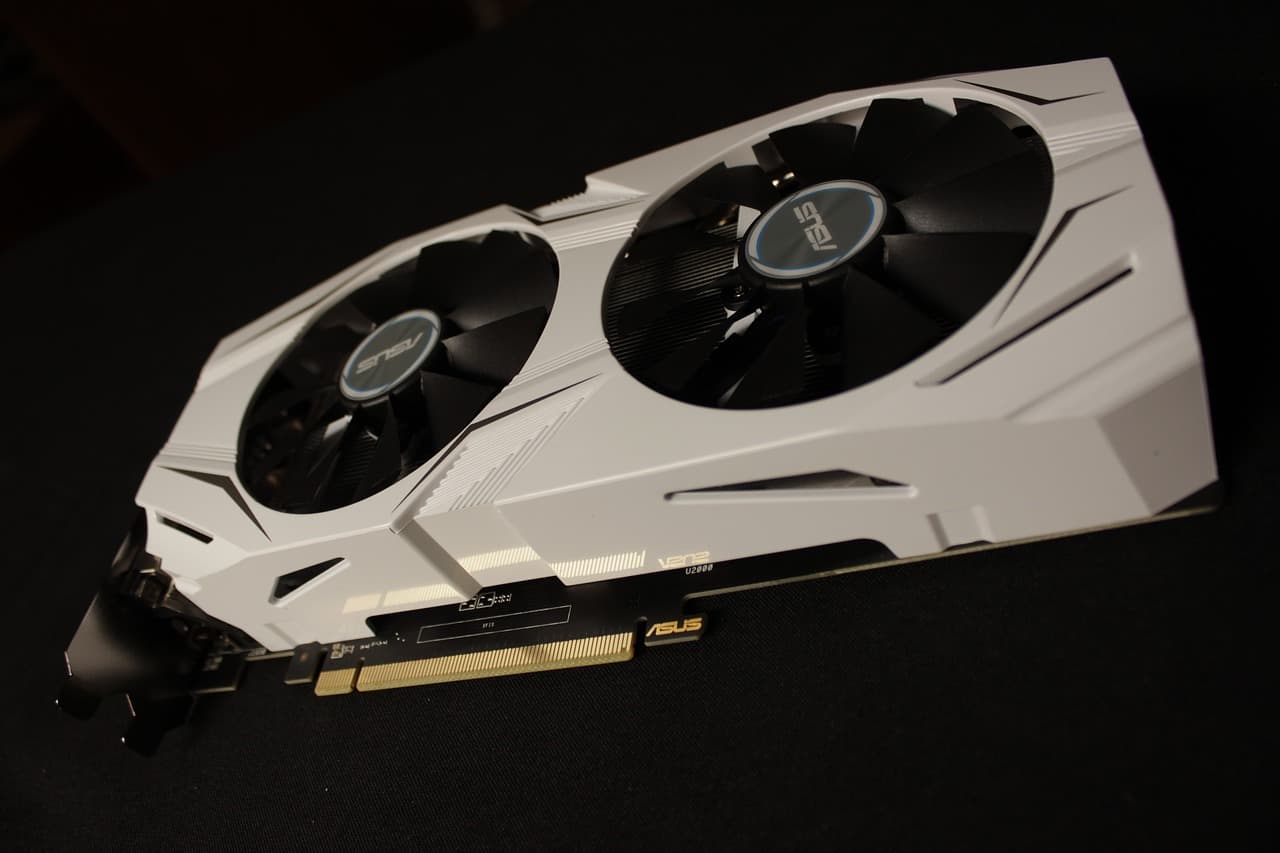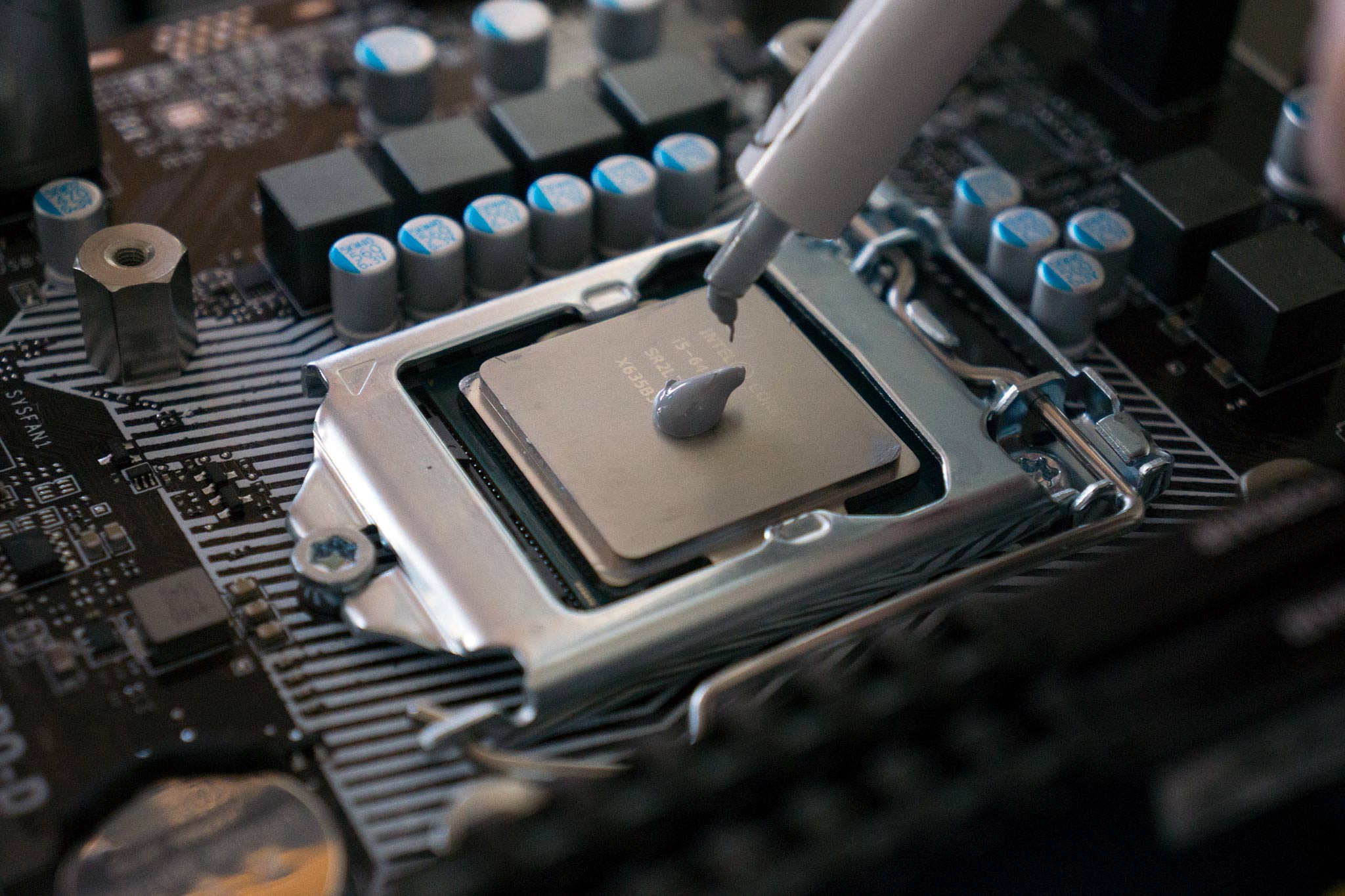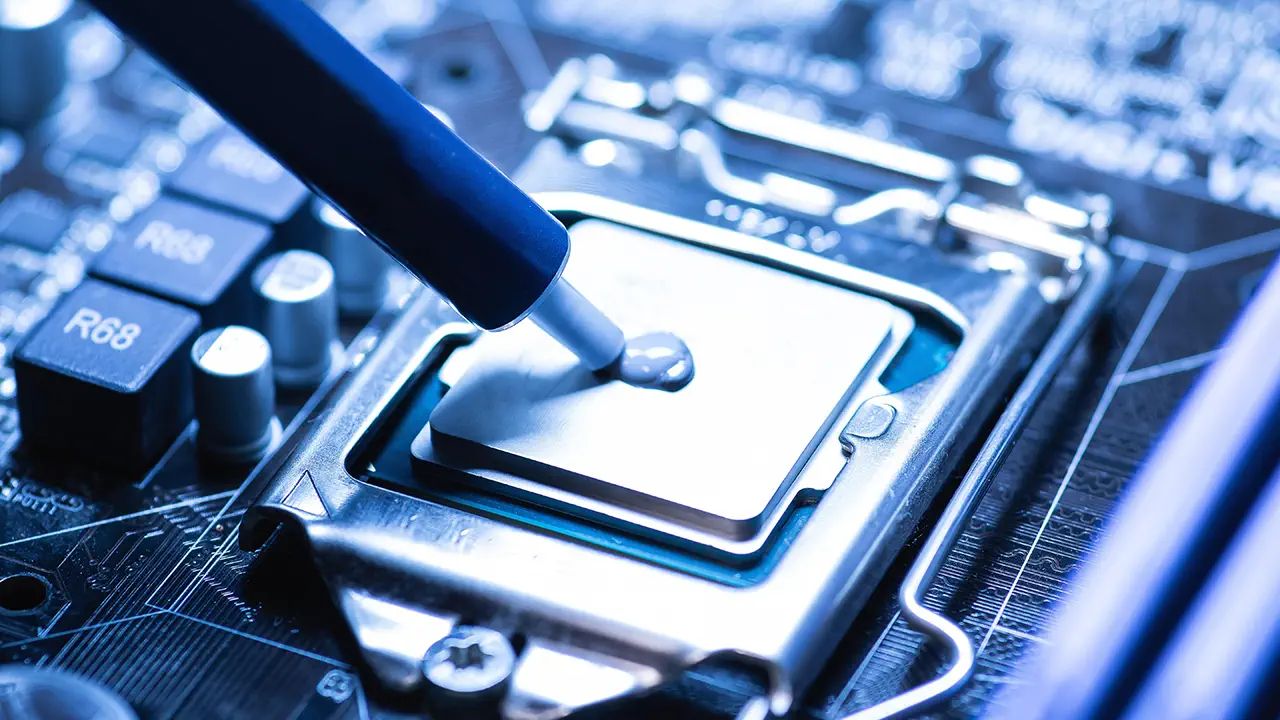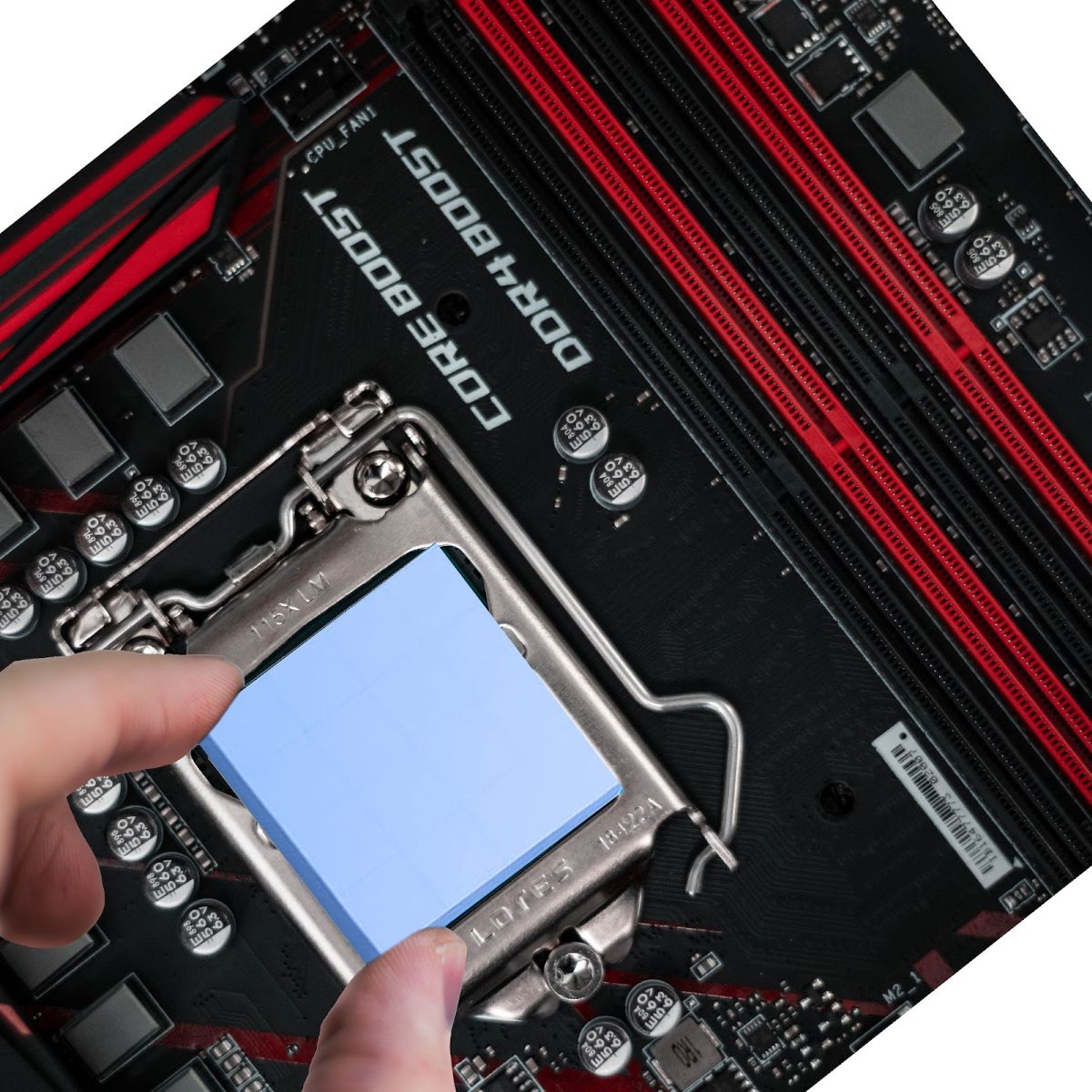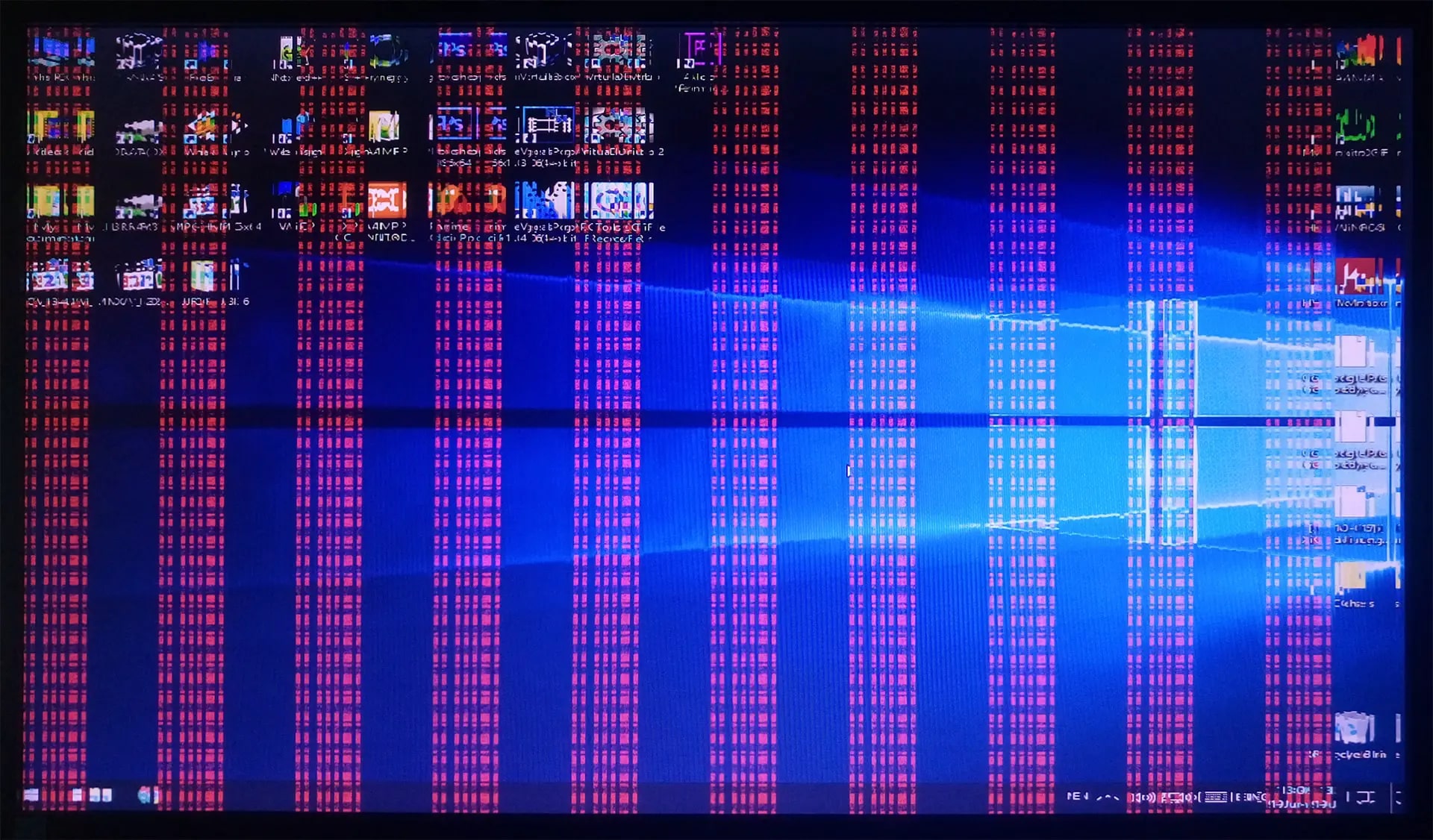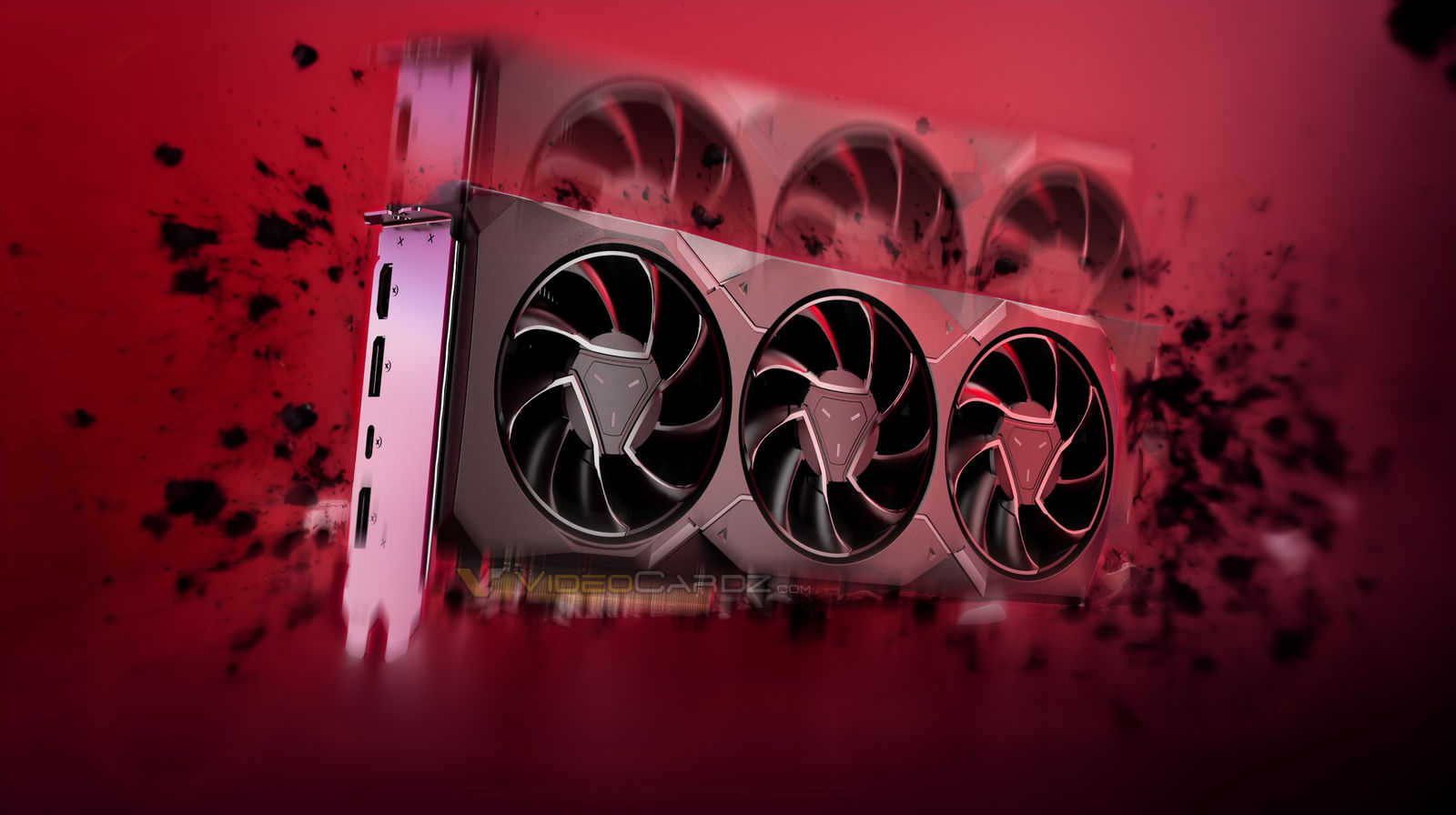Signs of a Dying GPU
As technology advances, graphics cards have become an integral component of modern computing systems, especially for gaming and graphic-intensive tasks. However, like any hardware component, a GPU (Graphics Processing Unit) can deteriorate over time. Being aware of the signs of a dying GPU can help you diagnose and address the issue before it leads to complete failure.
1. Artifacts on the screen: One of the most noticeable signs of a failing GPU is the appearance of graphical artifacts on the screen. These artifacts can manifest as flickering pixels, distorted textures, or random graphical glitches during gameplay or even while performing simple tasks.
2. Overheating: A dying GPU may struggle to regulate its temperature, resulting in frequent overheating. You might notice sudden crashes, blue screen errors, or system shutdowns when the GPU becomes excessively hot. Additionally, long gaming sessions or graphic-intensive tasks may cause the GPU fan to spin at higher speeds than usual.
3. Screen freezes or black screens: If your computer screen freezes or goes black intermittently, it could be a sign of a failing GPU. This can happen during heavy graphics usage or even during routine tasks, indicating that the GPU is struggling to process the workload.
4. Graphical glitches: Unusual graphical anomalies such as screen tearing, pixelation, or ghosting can be indicative of a GPU nearing its end. These glitches may occur during gameplay, graphic-intensive applications, or even while browsing the web.
5. Driver crashes: If your GPU is dying, it may have difficulty communicating with the device drivers. You may experience frequent driver crashes, leading to system instability, program crashes, or even the infamous “blue screen of death.”
6. Reduced performance: A noticeable drop in the graphics card’s performance, such as lower frame rates, stuttering, or lagging, can suggest that the GPU is nearing the end of its life. This reduction in performance may be apparent in games, photo/video editing software, or other graphics-intensive applications.
7. Increased fan noise: A failing GPU may require the cooling fans to work harder, resulting in increased fan noise. If you notice the fan making unusually loud and constant noise, it could be an indication that the GPU is struggling and needs attention.
Remember, while these signs can indicate a dying GPU, it is essential to rule out other potential causes of the issue, such as outdated drivers, faulty cables, or power supply problems. If you notice multiple signs of a failing GPU, it is advisable to seek professional assistance or consider replacing the graphics card to avoid further damage to your system.
Common Symptoms of a Failing Graphics Card
A failing graphics card can cause various issues that affect the overall performance and visual output of your computer. Recognizing the common symptoms of a failing graphics card can help you diagnose and address the problem before it causes significant damage. Here are some key symptoms to watch out for:
1. Screen flickering and artifacting: If you notice frequent screen flickering or strange visual artifacts like random lines, dots, or colors on your monitor, it could be a sign of a failing graphics card. These glitches can occur during gaming, video playback, or even normal desktop usage.
2. Random crashes and system instability: A failing graphics card can lead to random crashes, freezes, and system instability. You may experience sudden black screens, blue screens of death (BSOD), or your entire system may freeze requiring a hard reset. These issues can occur during graphic-intensive tasks like gaming or rendering.
3. Texture and rendering issues: A failing graphics card may struggle to render graphics properly, resulting in distorted textures, pixelation, or missing details in games or applications. You may notice blurry or blocky visuals, objects not rendering correctly, or textures appearing stretched or corrupted.
4. Heat issues and fan noise: GPUs generate heat during operation, and a failing graphics card may have difficulties managing its temperature. This can lead to excessive heat buildup and cause the graphics card’s cooling fans to spin faster and louder than usual. If you notice unusually high temperatures or excessively loud fan noise, it could indicate a failing GPU.
5. Reduced performance: A failing graphics card often experiences a significant decrease in performance. You might notice lower frame rates, stuttering, or lagging in games or other graphical applications. The graphics card may struggle to keep up with the demands of the software, resulting in a noticeably degraded user experience.
6. Driver issues and crashes: An aging or failing graphics card may have compatibility problems with the device drivers. This can result in frequent driver crashes, system errors, or even the inability to install and update drivers properly. You may encounter error messages or find it challenging to control or configure your graphics card through the software.
7. Multiple display issues: If you use multiple monitors or have a setup that relies heavily on the graphics card’s output, a failing GPU may cause issues with multiple displays. You may experience monitor flickering, black screen on one or more displays, or incorrect screen resolutions.
If you notice any of these symptoms, it is important to troubleshoot the problem and determine if your graphics card is indeed failing. Consult with a professional or seek technical assistance to diagnose the issue accurately and explore potential solutions, which may include repairing or replacing the graphics card.
How to Identify if Your GPU is Dying
Identifying whether your GPU (Graphics Processing Unit) is dying can help you take necessary actions to prevent further damage or system instability. Here are some methods to help you determine if your GPU is failing:
1. Monitor GPU temperatures: Keep an eye on your GPU’s temperature using monitoring software or utilities. If you notice consistently high temperatures, especially during idle or light usage, it could be a sign of GPU overheating, indicating potential GPU failure.
2. Check for graphical artifacts: Run graphic-intensive applications or games and observe if you encounter graphical artifacts such as flickering pixels, distorted textures, or random graphical glitches. These visual anomalies are often indicative of a failing GPU.
3. Test your GPU with diagnostic tools: Utilize GPU diagnostic tools to stress test your graphics card. These tools can help identify any abnormalities, including overheating, memory errors, or rendering issues that may suggest a dying GPU.
4. Monitor fan behavior: Observe your GPU’s fans while running demanding tasks. If the fans consistently spin at high speeds, generate excessive noise, or fail to spin at all, it may be a sign of a failing GPU cooling system.
5. Monitor performance changes: Keep track of any significant drops in performance, such as sudden frame rate decreases, stuttering, or frequent crashes during graphic-intensive tasks. If you notice a persistent decline in GPU performance, it could indicate a failing GPU.
6. Update device drivers: Ensure that you have up-to-date drivers for your GPU. Outdated or incompatible drivers can cause various issues, including system instability. If updating the drivers does not resolve the problems, it could imply a deeper hardware issue with the GPU.
7. Pay attention to error messages: If you frequently encounter error messages related to graphics hardware, such as “Display driver stopped responding and has recovered,” it might indicate underlying GPU problems that require further investigation.
8. Test the GPU on another system: If possible, test the GPU in another computer to see if the issues persist. If the problems occur across multiple systems, it is more likely that the GPU is at fault.
It is important to note that while these methods can help identify potential GPU issues, they are not foolproof diagnostic methods. If you suspect that your GPU is dying, it is recommended to consult with a qualified technician or seek professional assistance to accurately diagnose the problem and determine the best course of action.
Warning Signs that Indicate a Dying GPU
A graphics card can exhibit warning signs that indicate it is on the verge of failure. Being aware of these warning signs can help you take necessary precautions and avoid sudden hardware failures. Here are some common warning signs that indicate a dying GPU:
1. System crashes and instability: If your computer frequently crashes, freezes, or experiences unexpected restarts, it could be a symptom of a failing GPU. These issues often occur during graphic-intensive tasks, such as gaming or rendering.
2. Black screen or no display: If your computer powers on but the screen remains black or there is no display signal, it could suggest a failing GPU. This could be accompanied by beeping sounds from the computer or the GPU’s cooling fans spinning at unusually high speeds.
3. Unresponsive graphics card: If your graphics card becomes unresponsive, causing programs and games to freeze or crash consistently, it may indicate a hardware problem. This could be due to memory errors, overheating, or damaged components within the GPU.
4. Visual artifacts and glitches: When a GPU starts to fail, you may notice visual artifacts on your screen, such as random colored pixels, screen flickering, or distorted textures. These graphical glitches indicate that the GPU is struggling to process and display images accurately.
5. Unusual fan behavior and overheating: A dying GPU may have difficulty managing its temperature, leading to excessive heat buildup. As a result, you may notice unusually high temperatures or the GPU’s cooling fans spinning at higher speeds to compensate for the increased heat. Overheating can cause stability issues and further damage the graphics card.
6. Failure to boot or frequent system errors: If your computer fails to boot or experiences frequent system errors, it could be due to a failing GPU. These errors can manifest as blue screen crashes, error messages related to the graphics card, or system instability in general.
7. Inability to update or install drivers: If you encounter difficulties in updating or installing graphics card drivers, it may indicate underlying hardware issues with the GPU. Outdated drivers or conflicts between the operating system and the GPU can contribute to driver installation problems.
If you notice any of these warning signs indicating a dying GPU, it is recommended to act promptly. Back up important data, clean the GPU and ensure proper airflow within the system, and consider seeking professional assistance to diagnose the issue properly. Remember, a failing GPU can impact your computer’s overall performance and may lead to further damage if left unattended.
Indications that Your Graphics Card is About to Fail
A failing graphics card can cause a myriad of issues, impacting your computer’s performance and visual output. Understanding the indications that your graphics card is about to fail can help you address the problem before it becomes irreversible. Here are some common indications that your graphics card is on the verge of failure:
1. Increased system crashes: If you notice that your computer is experiencing more frequent crashes, including sudden freezes or spontaneous restarts, it could be an indication that your graphics card is failing. These crashes often occur during graphically intensive tasks or when the GPU is under heavy load.
2. Intermittent display issues: A failing graphics card may exhibit intermittent display problems, such as screen flickering, horizontal or vertical lines, or screen blackouts. These issues can occur during normal usage or become more pronounced during gaming or other graphic-intensive applications.
3. Overheating and abnormal fan behavior: If your graphics card is approaching failure, it may struggle to regulate its temperature properly, leading to increased heat buildup. As a result, you may notice that the GPU’s cooling fans are running at higher speeds than usual, generating more noise. Additionally, the graphics card may reach higher temperatures, potentially causing system instability or shutdowns.
4. Degrading performance: A declining graphics card often exhibits a noticeable decrease in performance. You may experience lower frame rates, stuttering, or lag during gameplay or while running graphic-intensive applications. This performance degradation can significantly impact your overall gaming or graphics experience.
5. Artifacts and visual anomalies: As a graphics card deteriorates, it may struggle to render visuals properly, resulting in graphical artifacts and anomalies. You may notice distorted textures, odd color patterns, or pixelation in games or applications. These visual anomalies are a clear indication that your graphics card is failing.
6. Unresponsive or non-functional GPU: If your computer fails to detect the graphics card or you’re unable to access its settings or properties, it could be a sign of an impending failure. An unresponsive GPU may result from issues with the card’s communication with the motherboard or internal hardware malfunctions.
7. Unusual noises or burning smell: In some cases, a failing graphics card may emit strange noises, such as buzzing or whining sounds. Additionally, if you detect a burning smell coming from your system, it is vital to inspect the graphics card as it could be overheating or experiencing electrical issues.
If you witness any of these indications that your graphics card is about to fail, it is recommended to act promptly. Take measures such as monitoring the temperature, ensuring proper ventilation and cooling, and potentially seeking professional assistance to diagnose and resolve the issue. Timely intervention can help prevent more severe damage to your system and ensure a smooth computing experience.
What to Look for When Diagnosing a Failing GPU
Diagnosing a failing GPU (Graphics Processing Unit) is crucial for determining the root cause of performance issues or system instability. By knowing what to look for, you can effectively assess whether your GPU is indeed failing. Here are some key factors to consider when diagnosing a failing GPU:
1. Visual anomalies: Pay attention to any visual abnormalities, such as screen flickering, artifacts, or distorted textures during gaming or other graphic-intensive tasks. These visual anomalies indicate that the GPU may be struggling to process graphics properly.
2. Performance degradation: If you notice a gradual decline in the performance of your graphics card, such as lower frame rates, stuttering, or increased loading times, it could be a sign of a failing GPU. Compare the performance with past benchmarks or similar systems to identify significant differences.
3. System crashes and instability: Take note of any frequent crashes, freezing, or unexpected restarts that occur during graphics-intensive activities. If these issues persist even after driver updates and system optimizations, it is likely that the GPU is the cause.
4. Overheating: Monitor the temperatures of your GPU using appropriate software. If the GPU consistently reaches high temperatures under normal usage or experiences sudden spikes in temperature, it may indicate cooling system problems or a failing GPU.
5. Driver issues: Keep an eye out for driver-related problems, such as frequent driver crashes, failed driver installations, or errors while updating the GPU drivers. These issues can be symptomatic of a faulty GPU or conflicts between the GPU and other hardware or software components.
6. Unusual noises and excessive fan speed: Check for any unusual noises, such as grinding, buzzing, or clicking sounds emanating from the graphics card. Additionally, note if the GPU’s cooling fans are running at abnormally high speeds, which could indicate overheating or fan malfunctions.
7. Testing on a different system: If possible, test the GPU on another computer to see if the issues recur. If the problems persist on different systems, it is more likely that the GPU is failing rather than other system components being the cause.
8. Professional diagnosis: If you are unsure or unable to diagnose the GPU issues yourself, consider seeking professional help. A qualified technician or computer repair service can perform advanced diagnostics and confirm whether the GPU is indeed failing.
Keep in mind that diagnosing a failing GPU requires careful observation and consideration of multiple factors. It is important to rule out other potential causes, such as software conflicts or power supply issues, before concluding that the GPU is failing. When in doubt, consulting with an expert can provide you with a more accurate diagnosis and guide you towards the appropriate course of action.
Signs and Symptoms of a Failing Graphics Processing Unit (GPU)
A failing Graphics Processing Unit (GPU) can significantly impact the performance and functionality of your computer. Recognizing the signs and symptoms of a failing GPU is essential for timely troubleshooting and addressing the issue. Here are some common signs and symptoms to look out for:
1. Screen artifacts: One prominent sign of a failing GPU is the presence of screen artifacts, such as flickering pixels, random lines, or distorted textures. These visual anomalies can occur during gaming, graphic-intensive tasks, or even during regular desktop usage.
2. System instability: A failing GPU can cause frequent system crashes, freezes, or sudden restarts, particularly during activities that put a strain on the graphics card. If you experience consistent instability that persists even after software updates and optimizations, it may be a sign of GPU failure.
3. Visual glitches: Look out for visual glitches like screen tearing, stuttering, or ghosting. These anomalies can occur while gaming, watching videos, or performing graphics-related tasks, indicating that the GPU is not processing the visuals correctly.
4. Overheating and fan issues: A dying GPU may struggle to regulate its temperature, resulting in overheating. You may observe the GPU reaching high temperatures even under normal usage. Additionally, the GPU’s cooling fans may spin at higher speeds than usual, generating excessive noise or exhibiting erratic behavior.
5. Driver problems: A failing GPU can cause recurring driver problems, including crashes or failure to install/update drivers. If you encounter frequent driver-related errors or experience difficulty running software that relies on the GPU, it may be indicative of GPU deterioration.
6. Reduced performance: If your computer experiences a significant decrease in graphics performance, such as lower frame rates, lag, or delayed responses, it could be due to a failing GPU. This reduced performance can impact gaming, graphic design, and multimedia-related tasks.
7. Unusual noises: Pay attention to any strange noises, such as grinding, buzzing, or clicking sounds coming from your GPU. These noises could signify fan malfunctions or other hardware issues associated with a failing GPU.
8. Multiple display issues: If you use multiple monitors or have a complex display setup, a failing GPU can cause problems with display detection, resolution settings, or overall display functionality. Look out for issues like black screens, screen flickering, or incorrect screen resolutions.
When you notice one or more of these signs and symptoms, it is crucial to investigate further and determine if your GPU is indeed failing. However, it is important to note that these symptoms alone may not be conclusive proof of GPU failure. Other factors, such as outdated drivers or power supply problems, can also contribute to similar issues. Consider seeking professional assistance or consulting with a technician for a proper diagnosis and to explore potential solutions.
How to Recognize a Failing Graphics Card
Recognizing a failing graphics card is crucial for troubleshooting the underlying issues and taking appropriate action. Here are some key indicators to help you recognize a failing graphics card:
1. Screen artifacts and graphical glitches: One common sign of a failing graphics card is the presence of screen artifacts, such as flickering, pixelation, or distorted textures. You may also notice graphical glitches like screen tearing or objects not rendering correctly during gameplay or graphic-intensive tasks.
2. System crashes and instability: A failing graphics card can cause system crashes, freezes, or sudden restarts. If your computer experiences frequent crashes, particularly during demanding activities like gaming or rendering, it may indicate a problem with the graphics card.
3. Performance degradation: If you notice a significant drop in performance, such as lower frame rates, lag, or delays in response, it could be a sign of a failing graphics card. You may observe a decline in graphics-intensive tasks like gaming, video editing, or 3D rendering.
4. Overheating and abnormal fan behavior: A malfunctioning or dying graphics card may struggle to regulate its temperature, leading to overheating. You may notice higher operating temperatures or louder cooling fan noise. Excessive heat can further contribute to system instability or damage the graphics card.
5. Driver-related issues: If you encounter frequent driver crashes, errors, or difficulty installing or updating graphics card drivers, it could indicate a failing graphics card. Graphics cards that are nearing the end of their lifespan may have compatibility or communication issues with the device drivers.
6. Multiple display problems: When a graphics card is failing, you may experience problems with multiple displays or external monitors. This can include issues like black screens, display flickering, incorrect resolutions, or problems with detecting and configuring multiple screens.
7. Unusual noises or burning smells: A failing graphics card may emit strange noises, such as grinding, buzzing, or clicking sounds. These noises could indicate fan malfunctions or other hardware issues. Additionally, if you detect a burning smell coming from the graphics card or the system, it is essential to investigate further as it may indicate overheating or electrical problems.
It’s important to note that while these indicators can be suggestive of a failing graphics card, they may not be definitive proof. Some issues, such as driver conflicts or power supply problems, could also cause similar symptoms. If you suspect your graphics card is failing, consider consulting with a professional or seeking technical assistance to accurately diagnose the issue and determine the best course of action.
Key Indicators that Your GPU is on the Verge of Failure
Being able to recognize the key indicators that your GPU (Graphics Processing Unit) is on the verge of failure can help you proactively address the issue before it leads to complete malfunction. Here are the key indicators to look out for:
1. Persistent graphical artifacts: If you consistently notice graphical artifacts such as flickering pixels, distorted textures, or random graphical glitches, it is a clear indication that your GPU is struggling and may be on the verge of failure. These artifacts can occur during gaming, graphic-intensive tasks, or even during normal computer usage.
2. Increasing system crashes: If your system experiences frequent crashes or freezes, especially during demanding activities like gaming or rendering, it could be a sign that your GPU is on the brink of failure. These crashes may occur more frequently as the GPU deteriorates further.
3. Unresponsive or non-functional display: If your computer screen goes black, remains blank, or shows no display signal despite the system powering on, it could indicate imminent GPU failure. In some cases, you may still hear sounds or notice the system running, but without any visual output.
4. Rapid overheating: A GPU nearing failure may struggle to regulate its temperature properly, resulting in rapid overheating. You might observe significantly higher temperatures than normal, even during light usage. The GPU’s cooling fans may also spin at unusually high speeds in an attempt to dissipate the excess heat.
5. Consistent performance degradation: A deteriorating GPU often exhibits consistent performance degradation. You may experience lower frame rates, increased stuttering, or lag during gaming or other graphic-intensive tasks. The GPU may struggle to keep up with the demands of the software, resulting in a degraded user experience.
6. Driver conflicts and crashes: A GPU on the verge of failure may have difficulties with device drivers, resulting in conflicts and crashes. You may experience frequent driver-related issues, such as driver crashes, errors during driver installation or updates, or the inability to control and configure the GPU through the software interface.
7. Inconsistent video output: If you notice inconsistent video output, such as random signal loss or screens turning off and on intermittently, it indicates potential GPU instability. This behavior may occur during gaming, video playback, or other graphic-intensive tasks.
When you observe several of these key indicators, it is important to take action. Consider seeking professional assistance or consulting with a technician to diagnose and address the issues effectively. It’s crucial to act promptly to avoid further damage and potential system failure.
Identifying the Signs of GPU Deterioration
Identifying the signs of GPU (Graphics Processing Unit) deterioration is crucial for maintaining the optimal performance of your computer. By recognizing these signs, you can take appropriate actions to address the issues and ensure the longevity of your GPU. Here are some key indicators to help you in identifying GPU deterioration:
1. Gradual performance decline: Over time, you may notice a gradual decline in the performance of your GPU. This can manifest as lower frame rates, increased stuttering, or longer loading times during gaming, video rendering, or other graphic-intensive tasks.
2. Visual artifacts and glitches: One of the most apparent signs of GPU deterioration is the appearance of visual artifacts and glitches. You may observe screen flickering, pixelation, or unusual graphical anomalies such as distorted textures or objects not rendering correctly.
3. Instability and crashes: A deteriorating GPU can lead to system instability. You may experience frequent crashes, freezes, or sudden restarts, particularly during demanding activities like gaming or running graphic-intensive applications.
4. Increased heat and fan noise: As a GPU deteriorates, it may struggle to regulate its temperature effectively, leading to increased heat generation. This can cause the GPU’s cooling fans to run at higher speeds than usual, resulting in louder fan noise. Monitoring the GPU’s temperature and fan behavior can help identify signs of deterioration.
5. Driver-related issues: A deteriorating GPU may have compatibility issues with device drivers, resulting in various driver-related problems. You may encounter frequent driver crashes, errors during driver installation or updates, or the inability to access and configure GPU settings through software interfaces.
6. Inconsistent display behavior: Notice any inconsistent behavior with your display, such as screen flickering, random signal loss, or screens going blank intermittently. These issues can indicate GPU deterioration, especially if they occur during graphic-intensive tasks or when using multiple displays.
7. Unusual noises: Pay attention to any strange noises coming from your GPU. Grinding, buzzing, or clicking sounds may indicate fan malfunctions or hardware problems associated with GPU deterioration.
8. Increased power consumption: Insufficient power supply or GPU deterioration may cause your GPU to draw more power than usual. If you notice a significant increase in power consumption or if your system experiences power-related issues, it could be a result of GPU deterioration.
By identifying these signs of GPU deterioration, you can take appropriate steps to address the issues and ensure the optimal performance and longevity of your GPU. Regular monitoring, proper cooling, and maintenance can help prolong the lifespan of your GPU and avoid sudden system failures.







